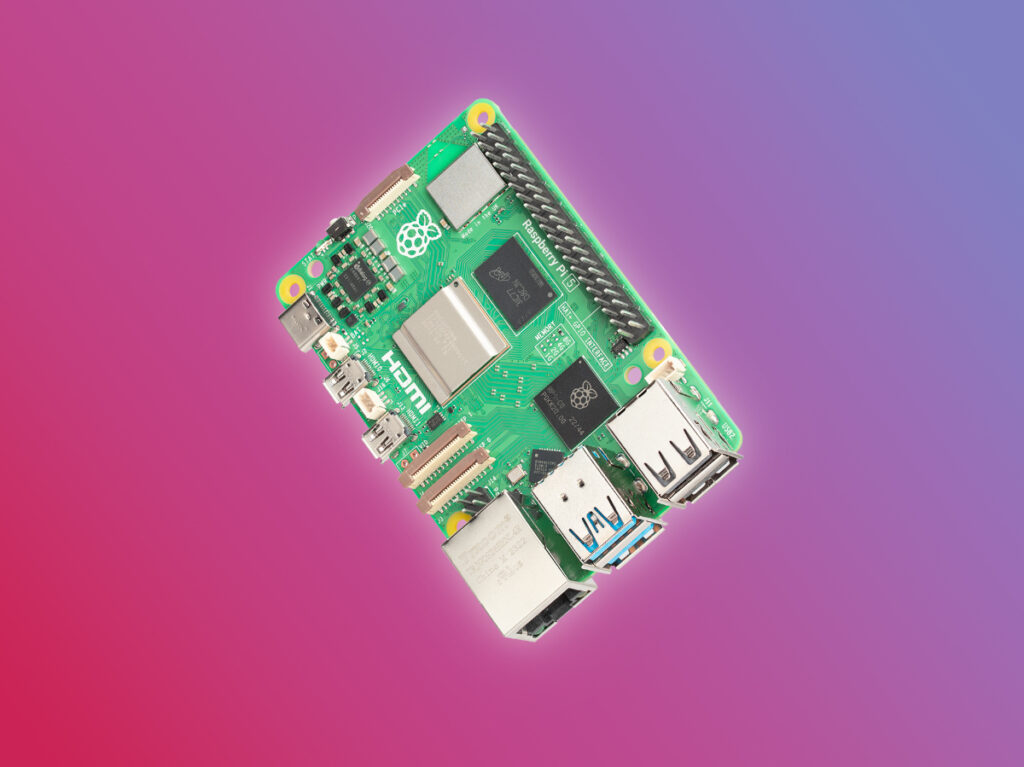
Great, more unobtainium

Have they been difficult to get? I’ve always been vaguely interested but never actually looked into getting one.

Go to https://rpilocator.com/ and filter by your “region” and check for yourself. Most models seems to be available. The Rapsberry Pi 5 is available for pre-order from a number of suppliers.

I mean uou can get 4’s at retail prices pretty easy right now.

Even the Pi has lost its headphone jack…

I mean, if you have USB, for a non-mobile platform, it doesn’t really matter. It’s not hard to get a USB audio interface.
For cell phones or laptops, I can understand not wanting another thing to plug in, but for something like a Raspberry Pi…shrugs

And you can just get an audio dac hat.

Hmm. Yeah, though I have to say that the USB route looks cheaper.

USB audio will always be better in pricing options, but the question is, which will give you better sound for the price. Of course, this only matters if you think audio quality is more important than price.

Why would you expect USB to constrain your audio quality?
You’re not getting better 0s or 1s based on which bus they’re sent over to the DAC.

Please re-read my response. I never said that USB would always constrain the audio quality, but if you get a cheap USB to aux converter, the quality would be lacking vs a more expensive solution.

To be fair, the pi’s have always been famous for low quality sound cards, so there’s plenty of hats that can add the functionality.

I generally hate the “just get dongles lol” argument but… maybe it’s not a huge loss in this one specific case. I’ve had four models over 3 generations (B, 2-something and 3) and the audio jack always kinda… sucked.

It’s a shame that even the Pi Foundation is cutting corners. Cutting corners and removing features all while not even coming close to their target $35 price. Almost double for the base model. This doesn’t feel like it fits the spirit of the original Pi Foundation goals at all.

Very cool they’ve added an interface to connect a peripheral that can have one though.

I want to be excited about this, but I just don’t believe I’ll actually be able to get one for retail price. For much of the RP4 lifecycle they prioritized corporate sales, and regular consumers were out of luck. I don’t have a lot of faith in them right now.

we’re going to ringfence all of the Raspberry Pi 5s we sell until at least the end of the year for single-unit sales to individuals, so you get the first bite of the cherry.

They’re probably doing that for first batch bug fixes.

To keep alive the community that maintains the packages that businesses use? /s
There are a few things you won’t forget and the last years were one of those events. Thankfully the competition made leaps forward regarding software support.
Do you remember FTDI-gate 1 & 2 (approx. 1 decade ago)? I do and FTDI never made it back onto my BOM and probably never will again, at least until SiliconLabs, WCH, and Holtek screw it up.

We are dumping the RPI computer modules form our BOM too. The N100 is at a very low price point and readily available. Never again in my BOM.

It’s gotten to the point with Windows 11 killing so many thin clients for businesses with TPM that you can typically find used ones for nearly as much as a Pi. Unless you need the size and efficiency I just struggle to find reason to buy another Pi if I need to selfhost something.
Pis are really cool but they really have become more corporate focused and it shows.

What should I look for in a thin client if I want to prioritize low power consumption?

The Pi foundation screwed over its original customer base by diverting practically ALL available inventory to business customers. Good riddance.

Can’t wait for this to be impossible to buy from anyone but scalpers.

https://rpilocator.com/ shows the Pi situation has been solved for a while.

We’d like to thank you: we’re going to ringfence all of the Raspberry Pi 5s we sell until at least the end of the year for single-unit sales to individuals, so you get the first bite of the cherry.

For the small price of 250 scalper dollars you will be able to buy it

Realistically probably not getting one for less than $160CAD.
At that point, might as well just buy a used Dell optiplex or something. These boards are absurdly priced, and you’ll never get it for MSRP.
Even with the added power consumption of the Dell you’ll pull out ahead lol

I remember when the Raspberry Pi was the amazing $15 computer. Times have changed.

Amazing for what exactly? I remember them being unreliable, slow af and not really good for much other than collecting dust.
I mean sure the idea was cool, in principle, but they needed a serious upgrade in specs. Now they got it and everyone bitches bc it comes at a price?

- Kiosks – my makerspace uses one for guest signin
- Pihole – make your life less ad-infested without browser plugins
- Octoprint – run your 3d printers
- Home voice assistant without relying on a big company of any kind, or sending them sounds of you having sex
The first models were rough on reliability, but they got a lot better around Model 2B and onward. SD cards with A1 or A2 rating help a lot.

I don’t need any of those things tho. Mostly what I need is decent IO throughput which was unnecessarily constrained on earlier pis by poor design choices. The pi4 is the first to really shine in that regard.
I have a pi2 and I used it as a libreelec media center, and it was Ok in that capacity, but it’s far too slow to transfer larger files regardless of how you do it (all relies on a slow usb interface).

Used Lenovo Thinkcentres are also a good option.

Priced at $60 for the 4GB variant, and $80 for its 8GB sibling (plus your local taxes), virtually every aspect of the platform has been upgraded, delivering a no-compromises user experience.
Ehhhhhh, that’s pushing it. Didn’t the v4 and v3 cost in the $30-$40 range?

$35 for 1GB RAM. 4 and 8 GB v4 are $55 and $75.

I didn’t see that in the article, but that’s a bit better, thanks.

They are talking about what the Pi 3/4 prices were. All that is mentioned about Pi 5 prices in the article is for 4GB/8GB.

Yeah, they didn’t even try to come close to the $35 price point. That was always RPi’s big selling point. I know COVID screwed that up but I was hoping it was a temporary thing, instead it seems they’ve used it as an excuse to raise prices permanently. Really stifles any excitement I had for the Pi 5 as RPi’s biggest advantage over the competition has traditionally been their low entry price. The base model is almost double the $35 point and we all know it’s getting scalped. Good luck getting a Pi 5 for a reasonable price.

If you could fine one, then maybe

I gotta resist the urge… I have two Pis idle 🤦♂️

These things are great for !boinc@sopuli.xyz often time leagues more efficient per watt in terms of computation than regular PCs. I have a couple of 'em working on cancer research and computing to develop an open-source patent-free covid antiviral. You don’t need a PhD to make a difference, all you need is a processor :)

If they were more efficient per watt for scientific computing, you’d hear about researchers building HPC clusters from them.

*more efficient than regular PCs. Not more efficient than supercomputers lol

If they were more efficient per watt for scientific computing, you’d hear about researchers building HPC clusters from them.
Efficiency per watt is not the same as total cost of ownership. Pis are expensive for the amount of compute you get from them in total, but the compute itself is efficient per watt. You would need at least a dozen Pis to rival the latest CPU processors in terms of total output, a dozen Pis is more expensive to buy than a single CPU.

I did a quick Google.
https://web.eece.maine.edu/~vweaver/group/green_machines.htmlIs the best actual test data I can find. It uses a physical power meter, so it’s full system (not TDP or self reporting power consumption).
And it’s a few years out of date.
Seems like Apple silicon is the winner (and will probably continue to be).
The Xeon that beats the rpi4 for GFLOPS/watt is an e5v3, which was launched in 2013 and EOL in 2021.
So there will absolutely be some new Xeon CPUs that will perform better.However, for a $50 device, it’s probably the best GFLOPS/watt/$ from what little empirical data I can find

There’s a lot of people in this discussion taking about how raspberry Pi and the pi foundation isn’t worth your money, whether on principle, or just dollars per unit of compute.
I get it, but I have a question. Is there a competing SBC that has official PoE support? I know there’s half baked ways to sort that out separate from the device, but I have a few edge cases where the last viable option was the pi 3B+. The official pi 4 case is horrendous for airflow, and third party cases usually either assume you want no protection (and all the airflow) or you want to handle thermals by contact pads passively (making it difficult or impossible to use the PoE hat), or are just as bad as the stock case for airflow, but they have enough room inside to add a hat, in which case, why go third party when the official case is equally terrible?
The pi 3 had a PoE hat, and a case you could take the top off and get decent airflow. Too bad the fans in the first gen PoE hat are unicorns in terms of power draw, with no way to adjust the power curve for the fan connector to suit a different fan, and since they’re unicorns, you can’t find them for purchase, and if you find something remarkably similar, they’re still slightly different enough that they don’t work (I’ve tried). So the fans burn out and IDK, good fucking luck I guess. Buy a new PoE hat?
Then there was the gen 2 PoE+ hat which released alongside the pi 4, which supposedly works with the 3 as well, which I haven’t tried yet, but I’m planning to.
In every case, I have done network monitoring and service nodes that aren’t exactly local to a power receptacle and they need PoE. The pi 4 eliminated itself because of the garbage case design of the official case and the lack of thought by those doing the third party cases… so I’m looking at the 5 like, finally, they got it right.
Now everyone is talking shit about the pi foundation, which I can completely understand, but for the application I need these for (and my pi 3’s have been in service for like ~5 years and probably need to be refreshed), what other option do I have? What’s decent with a good case and PoE input? PoE or PoE+ doesn’t matter, I just need to be able to package it up into a relatively small footprint for the application.
Anyone have any suggestions? I’m all ears. I’ve googled till I’m blue in the face and I can’t even find an SBC that has an option for PoE, I never got to looking into whether it has a decent case or if it will run my software…


Are they still playing apologetics for the cops? Because if so, no thanks.

Well – they never really backed down on what they did. Far as we know the out-and-proud espionage cop is still in their payroll, and the only response they ever gave to the story was a generalised ‘We think the entire thing is being astroturfed and that no one reasonable is ACTUALLY against us hiring this guy who bragged about all the espionage he did’ back in the day.
They never said anything about it since. So it’s fair to assume they still believe in what they did.

What does that mean?

Here’s a google prompt for you: “raspberry pi police”

No need to be an ass about it. For those who don’t want to sift through an article, the RPi Foundation apparently hired an ex-cop who had been known to use their products to conduct surveillance, and that caused a controversy.

“Are they still [irrelevant complaint]”
“What?”
“GoOgLe iT”Sigh…

🎶 I know what I’m gonna buy soon 🎶

I loved Pi’s, but I hate the micro hdmi connectors


